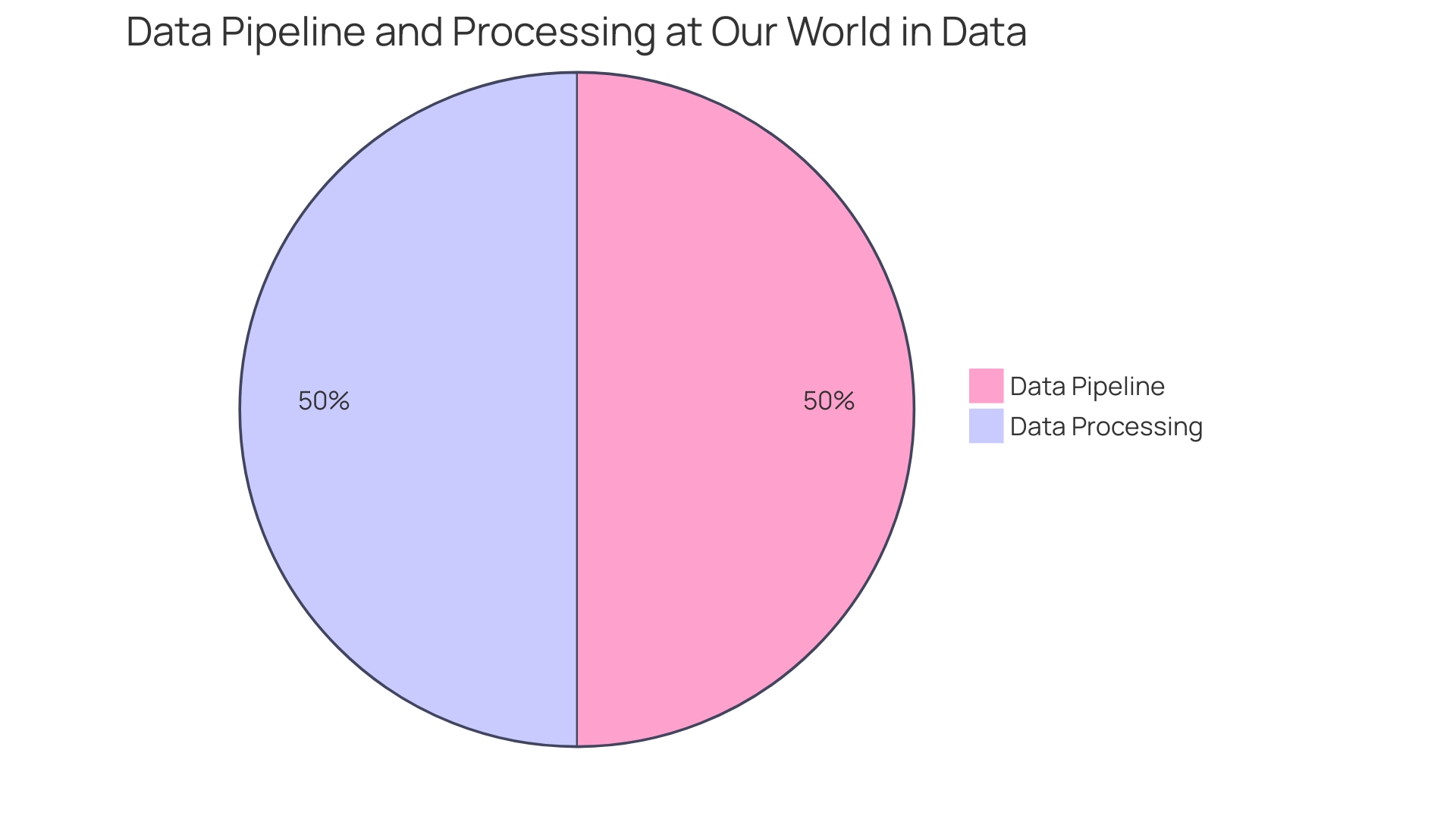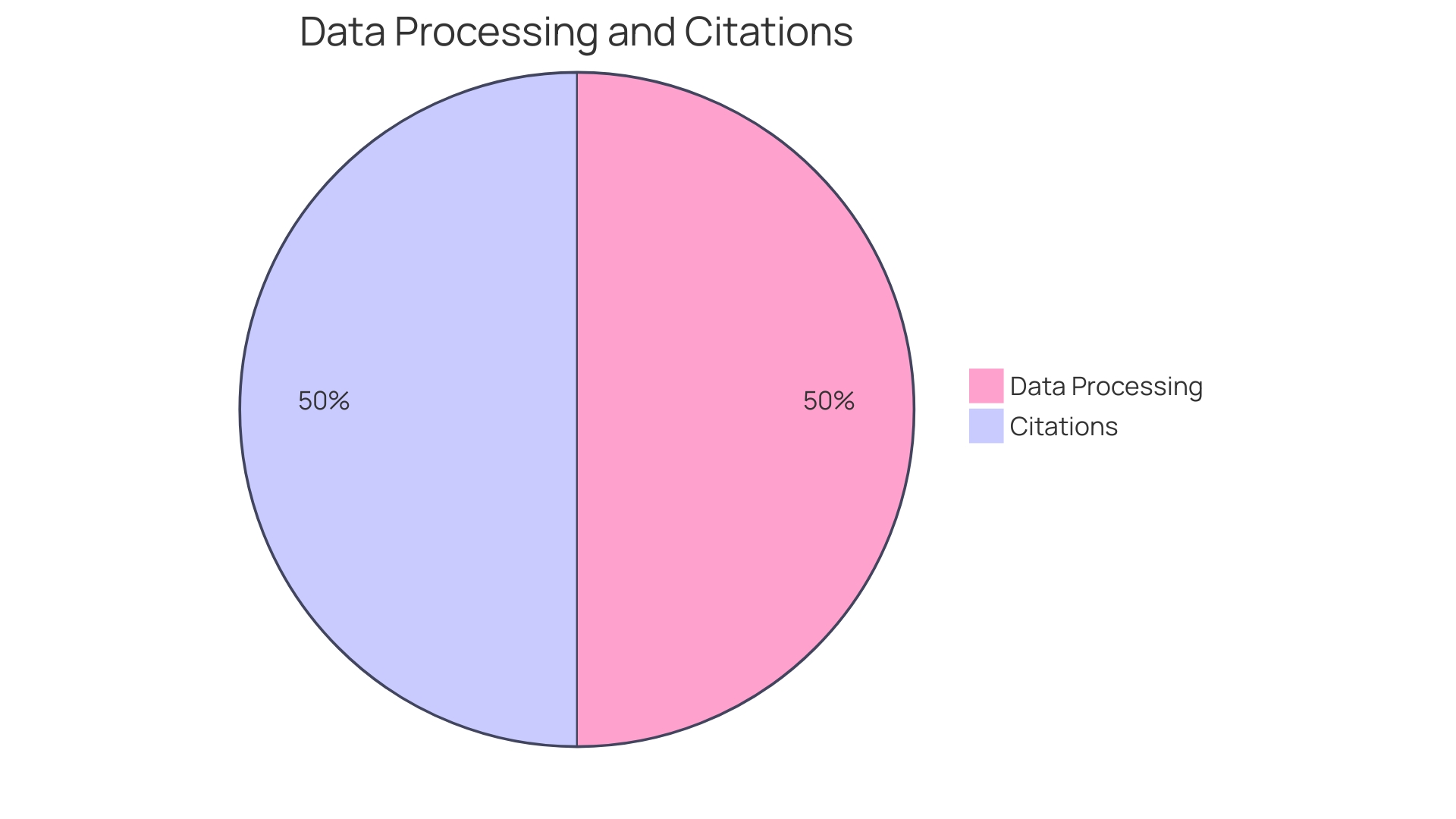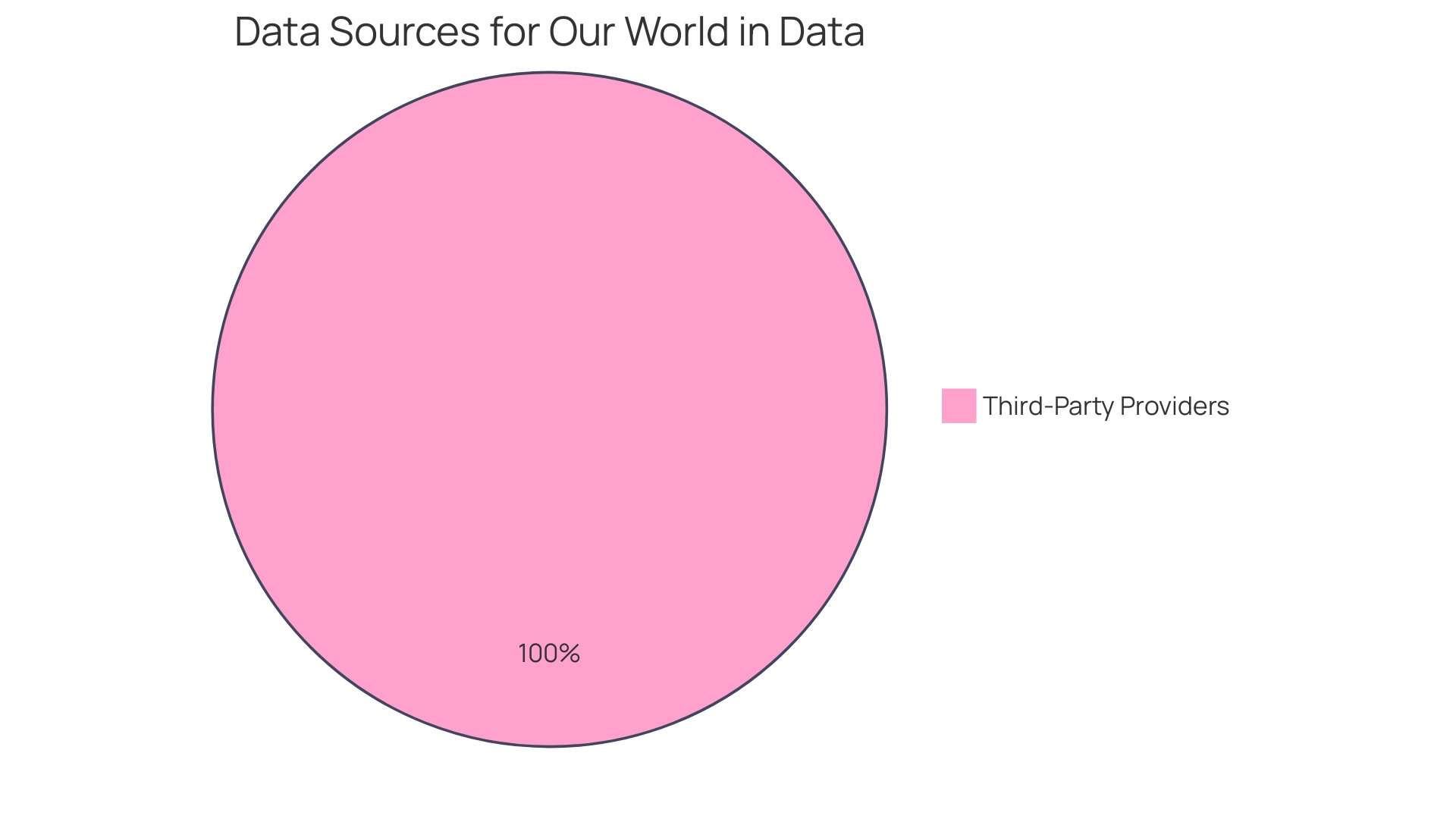Introduction
The energy landscape is undergoing a paradigm shift as the world transitions from fossil fuels to renewable energy sources. While fossil fuels have long been the cornerstone of global energy supply, their finite nature and detrimental environmental impact have prompted a pressing need for change. In this article, we will explore the formation of fossil fuels, the reasons why they are nonrenewable, and the comparison with renewable resources.
We will also delve into the environmental impact and sustainability concerns associated with fossil fuels, as well as the alternatives that are driving the transition towards a more sustainable and cleaner energy future. Join us as we navigate the complexities of our energy transition and the profound implications it holds for our society and the environment.
What Are Fossil Fuels?
The landscape of power is deeply ingrained in the use of fossil fuels, which have been the cornerstone of global energy supply for generations. Coal, oil, and natural gas, obtained from ancient organic matter, together fulfill two-thirds of our power needs. They are the lifeblood of crucial sectors, powering everything from transportation, where they make up 95% of the energy combination, to residential buildings, which depend on them for about 40% of their energy requirements.
Despite their dominance, a paradigm shift is underway. The Rhodium Climate Outlook projects a future trajectory for non-renewable energy demand that does not account for drastic policy changes or technological advancements, providing a baseline for where intensified efforts are necessary. In the last decade, the surge in renewable energy generation has been remarkable, driven by policies, investments, and breakthroughs that have significantly lowered the costs of solar and wind power.
This change is not just a crucial step towards achieving worldwide climate objectives but also presents an enormous challenge due to the ubiquity of fuel derived from ancient remains. It's a transition that necessitates a concerted effort from governments, businesses, and society at large. According to the Energy Transitions Commission, in 2022, fossil fuel-related activities resulted in 34.2 Gt of CO2 and 124 Mt of methane emissions. The methane emissions alone have a CO2 equivalent impact of 3.7 Gt over a century, bringing the total fossil-related emissions to 37.9 Gt when considering a 100-year timeframe.
The International Energy Agency's Executive Director Fatih Birol emphasizes the inescapability of the transition, underscoring the urgency for support rather than resistance. The possible benefits encompass job creation, security, cleaner air, and a stable climate. Nevertheless, the present path of demand for non-renewable resources poses a risk of surpassing the temperature boundaries established by the Paris Agreement, putting both climate equilibrium and power stability in danger.
Amidst this backdrop, California has demonstrated that economic growth can coincide with emissions reduction. The state's initiatives, led by the California Air Resources Board (CARB), focus on balancing economic considerations with the need for effective pollutant reduction.
In the corporate sphere, BP's net-zero by 2050 ambition is a testament to the changing ethos in the traditionally hydrocarbon-centric industry. Similarly, the shipping sector faces a transformation with stringent emission regulations, highlighting the broader implications for the global economy.
The narrative around crude oil's discovery and its impact on modern society reflects the profound transformation over the past two centuries. From a world where electricity and extensive travel were nonexistent, we have evolved to a society entirely dependent on products derived from non-renewable energy sources, as highlighted by the historical perspectives on the petroleum industry's evolution.
The shift to renewables is not just about replacing sources but also ensuring equitable benefits, as noted by Stephan Singer from Climate Action Network International. The renewables sector's vulnerability to financial conditions, especially in emerging economies, underscores the need for improved financing mechanisms to support a just transition.
As we envision a future in which sustainable power sources assume a pivotal position, it is vital to grasp the interconnections and obstacles that accompany diminishing our dependence on non-renewable resources. This encompasses the mineral demands for sustainable technologies and the significance of literacy in acknowledging the intermittency of renewable sources such as wind and solar power.

Formation of Fossil Fuels
Fossil resources, like coal, oil, and gas, are the remains of past ecosystems, changed by long periods into the sources that drive contemporary civilization. Over millions of years, the organic matter from plants and animals was buried and subjected to extreme heat and pressure, leading to physical and chemical changes. The result is a diverse array of hydrocarbon compounds, including paraffins and naphthenes, which vary in appearance from thick black goo to lighter fluids, depending on their composition. These carbon-based resources are found in underground reservoirs worldwide, their locations a testament to the shifting geography of an ever-changing Earth. As society looks to cleaner power solutions, such as geothermal energy, which harnesses the Earth's heat and can be utilized in almost any location, the role of fossil fuels is being reevaluated. The pursuit of more environmentally friendly alternatives and the decarbonization of industries indicate a transition in power that acknowledges the environmental impact of fossil fuel consumption. Despite our reliance on these ancient sources of energy, which still dominate global demand, the quest for sustainable and less harmful energy production methods is gaining unprecedented momentum.
Why Fossil Fuels Are Nonrenewable
The limited character of non-renewable energy sources puts them in strong opposition to sustainable resources. Due to the lengthy time periods needed for their natural development, fossil resources cannot replenish at a rate that corresponds to their consumption. Once these energy sources are extracted and utilized, their restoration extends well beyond the scope of human lifespans. This is a critical distinction from renewable resources, which boast the ability to renew on a relatively short timescale.
Our modern civilization, profoundly transformed by the advent of crude oil over two centuries ago, is heavily reliant on the derivatives of fossil fuels. From the fundamental infrastructure that powers our world to the myriad of products that define our daily lives—such as medical devices, transportation, and communication tools—each is rooted in components derived from crude oil. The transition from a world devoid of electricity to one where every aspect of life is entwined with power usage highlights the reliance on these nonrenewable resources.
Furthermore, the categorization of resources into renewable and nonrenewable types is becoming increasingly outdated. The dichotomy, once useful for environmental impact considerations, now faces scrutiny as the global power landscape evolves. The urgent requirement for a transition in power, emphasized by the Net-Zero movement, necessitates a reassessment of how we assess and utilize our power reserves. Current reserve classification systems prioritize financial value over environmental impact, ignoring the potential emissions from burning these reserves. With established nonrenewable energy supplies surpassing what can be safely utilized to uphold a 1.5-degree temperature increase threshold, the possibility for these resources to become abandoned assets looms large.
The pursuit of alternative power sources and the challenges they present, such as the engineering feats required to harness wave energy or the elusive promise of fusion power, further emphasize the complexity of our transition away from fossil fuels. As we navigate this transition, it becomes evident that the influence of non-renewable resources on our society and environment extends far beyond their immediate utilization as power sources.
Comparison with Renewable Resources
Renewable resources like solar and wind power are differentiated from fossil fuels by their capacity to quickly replenish. These sustainable resources utilize ongoing natural processes, offering a lasting and eco-friendly power source. Fossil fuels, by contrast, take millions of years to form, positioning them as limited and non-renewable. Recent research, including a study published in Nature Energy, has shown that transitioning to renewable sources may not result in a net decline as previously thought. The study's co-author, Emmanuel Aramendia, highlighted the importance of the return on investment (ROI) metric, which measures the delivered energy compared to the invested resources. The findings suggest that sustainable technologies can indeed keep pace with traditional non-renewable sources in terms of net power generation. The Global Registry of Fossil Fuels further highlights this phenomenon, revealing that current fossil fuel reserves are significantly greater than what can be safely utilized without exceeding a 1.5-degree temperature rise, implying that as the transition towards renewable energy progresses, many fossil fuel reserves may become stranded assets. Meanwhile, the energy landscape continues to evolve with projects that integrate various technologies and stakeholders, demonstrating a multitude of energy transition solutions beyond just technological changes.
Environmental Impact and Sustainability Concerns
The extraction and burning of non-renewable resources are recognized for their harmful impacts on the environment. When burned, fossil fuels emit a concoction of greenhouse gases, notably carbon dioxide (CO2), methane (CH4), nitrous oxide (N2O), and fluorinated gases – all of which contribute significantly to the greenhouse effect and accelerating climate change. The 'Kyoto basket' of greenhouse gases, expressed in CO2-equivalents, underscores the urgency of this issue. Moreover, the physical processes involved in obtaining and refining these resources often result in substantial ecological damage and loss of biodiversity.
In comparison, sources such as wind, solar, hydroelectric, and geothermal power offer a cleaner, more sustainable means of electricity generation. These alternatives are not merely less harmful to the environment but are becoming increasingly economically viable. Solar power, for example, has become more cost-efficient than conventional sources in many regions of the United States, with wind power also demonstrating competitiveness. The decreasing expenses of sustainable power sources overall are a hopeful pattern for the future of power generation.
The shift to sustainable power sources is not just an environmental necessity but also a issue of social justice. Pollution caused by fossil resources has a greater impact on communities with lower incomes and communities of color, leading to efforts such as those made by the Office of Energy Efficiency and Renewable Energy (EERE) of the U.S. Department of Energy to tackle these disparities in fairness. Affordable, reliable power from renewables, combined with storage solutions, contribute to the resilience of power grids and have a direct positive impact on public health and mental well-being.
The push towards this transition is evident in various sectors. For instance, the shipping industry, a significant consumer of hydrocarbon fuels, is under pressure to reduce emissions, aligning with broader green shipping aspirations. Furthermore, life cycle assessments, such as those conducted by the National Renewable Energy Laboratory (NREL), are critical in ensuring the environmental sustainability of power technologies.
These developments are part of a global shift towards green power, exemplified by the European Union's drive towards renewable energy and the emerging 'prosumer' economics. However, obstacles persist, such as tackling the gender imbalance in sustainable power jobs and handling the shift in regions heavily dependent on fossil fuels, such as the Middle East, North and West Africa.
Advancements in efficiency also contribute to this transformation. Retrofitting and weatherizing homes and buildings can improve air quality and thermal comfort, reducing the prevalence of respiratory and heart conditions, allergies, and contributing to overall mental health.
Together, these initiatives demonstrate a dedication to a future where power is not just environmentally friendly and effective but also fair and available to everyone, laying the foundation for a more sustainable planet and society.

Alternatives to Fossil Fuels
The drive for renewable power adoption is fueled by the need to curb the environmental damages caused by non-renewable resources and to establish a more sustainable future for power generation. Technologies like solar, wind, hydropower, and bioenergy not only offer cleaner power but also come with economic benefits such as job creation and technological advancements. The transition towards these power sources is crucial for diversifying our power supply and reducing our dependence on dwindling fossil fuel reserves.
Remarkable global efforts are underway to revolutionize the power sector. Uruguay exemplifies a successful transition, with an astounding 98% of its electricity generated from sustainable sources, primarily due to its strategic use of abundant wind resources and efficient hydroelectric systems. This achievement aligns with the broader global consensus that a rapid shift to renewable power sources is necessary to mitigate the impacts of the climate crisis.
Despite the challenges, the European Union is actively supporting sustainable practices, demonstrated by selecting 30 islands to lead in the transition to sustainable practices with tailored assistance over three years. This initiative highlights the significance of a 'bottom-up' approach, empowering localities to customize their path to a carbon-free power system while sharing best practices.
The differentiation between 'green' and 'clean' power is crucial in these discussions. Green power, obtained from sustainable resources, must offer the maximum environmental advantage, considering the unavoidable trade-offs. Clean power, on the other hand, is defined by the lack of greenhouse gas emissions, a term that can be unclear regarding the overall environmental footprint.
The economic case for renewables is becoming increasingly compelling; solar and wind are already cost-competitive with traditional power sources in many regions, and costs are expected to continue to decline. Affordable, dependable power enhances health and safety by facilitating efficiency initiatives that enhance air quality and comfort in residences and structures.
As the renewable energy landscape evolves, the EU's recent 'Fit for 55' package and the repower EU plan reflect the urgency of aligning energy policies with climate objectives, proposing revisions to the renewable energy directive to meet the 2050 climate neutrality goal and reduce greenhouse gas emissions by at least 55% by 2030 compared to 1990 levels.

Conclusion
In conclusion, the transition from fossil fuels to renewable energy sources is essential for a sustainable and cleaner energy future. Fossil fuels are nonrenewable, emit greenhouse gases, and have detrimental environmental impacts. In contrast, renewable resources like solar and wind energy offer a sustainable and eco-friendly alternative.
Renewable energy technologies are becoming increasingly cost-competitive, making them economically viable options. They replenish rapidly and can keep pace with traditional fossil fuels in terms of net energy production. This transition is not only an environmental imperative but also a matter of social justice, as it improves air quality and public health.
Successful transitions to renewable energy are happening globally, with countries like Uruguay leading the way. Tailored approaches and initiatives by the European Union demonstrate the importance of sustainable practices and local empowerment.
Aligning energy policies with climate objectives and prioritizing sustainable practices are crucial for a successful transition. The economic case for renewables is compelling, as declining costs make solar and wind energy cost-competitive with traditional sources.
In summary, the transition to renewable energy sources is necessary to mitigate climate change, reduce reliance on finite fossil fuels, and create a healthier planet and society. It requires collective efforts, from governments to businesses and society as a whole, to embrace renewable energy and establish a sustainable and cleaner energy future.




